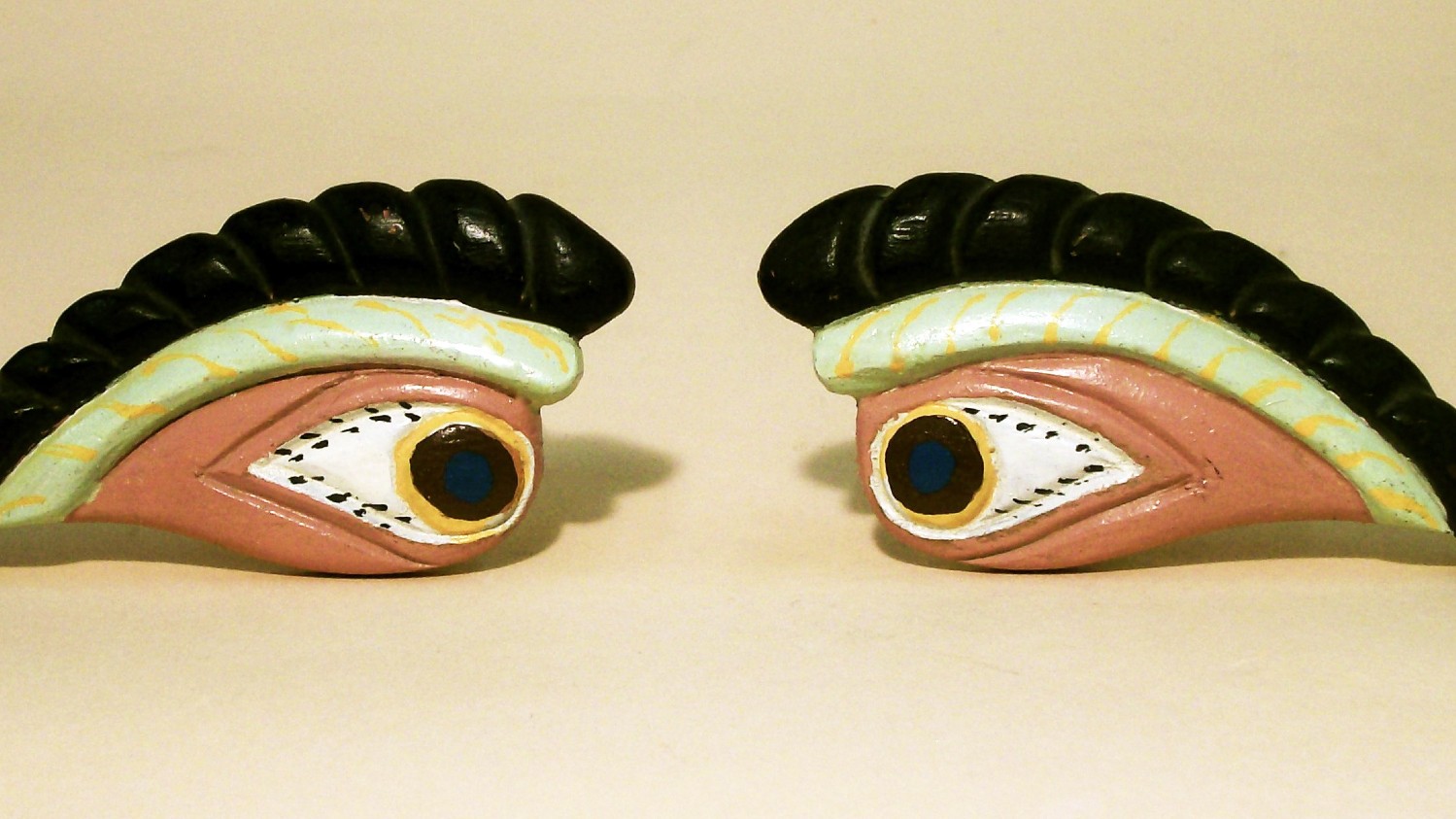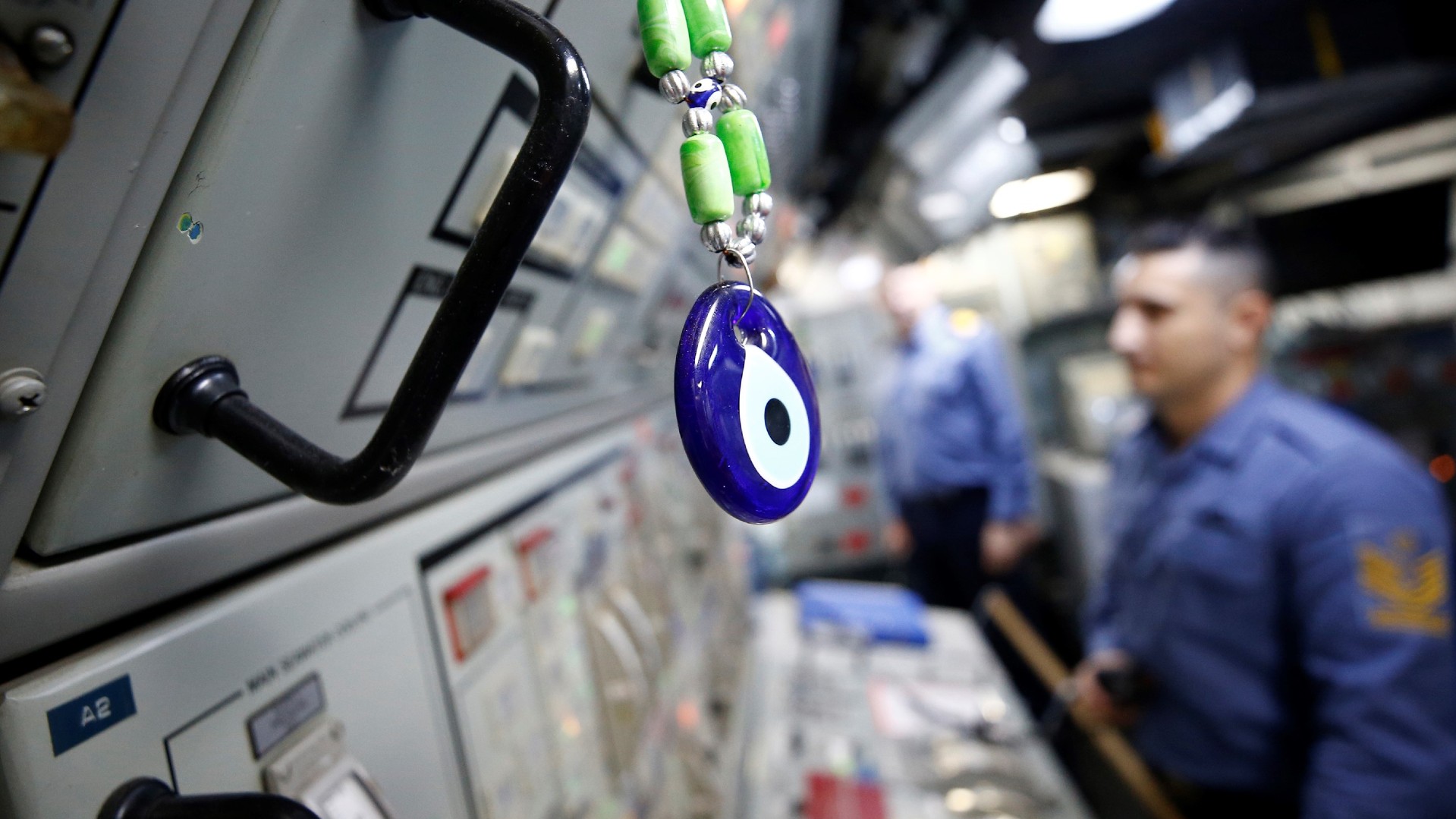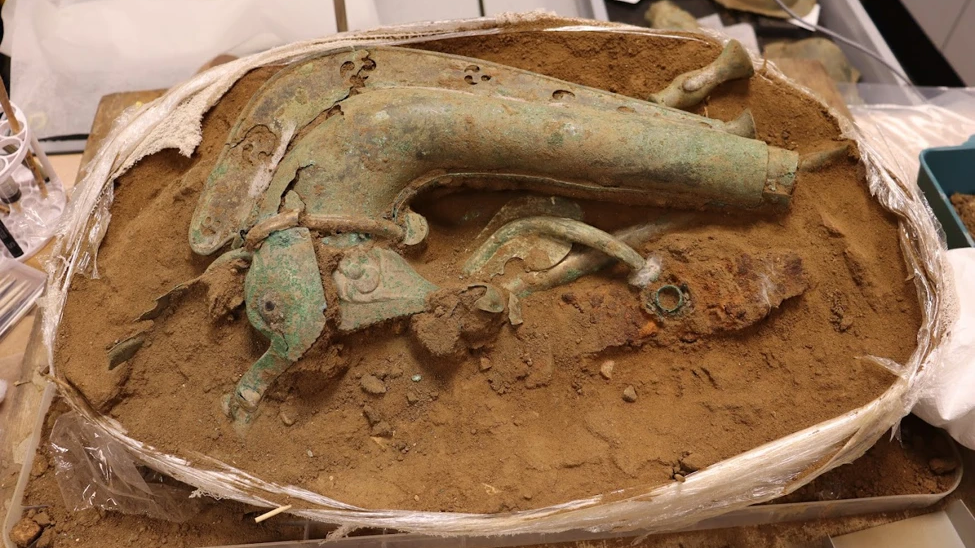Evil eye: History of the ancient curse
We all recognize the blue evil eye charm, but just what are the origins of this ancient curse?

The evil eye is a human look believed to cause harm to someone or something. The supernatural harm may come in the form of a minor misfortune, or more serious disease, injury — even death. Folklorist Alan Dundes, in his edited volume "The Evil Eye: A Casebook" (University of Wisconsin Press, 1992) notes that "the victim's good fortune, good health, or good looks — or unguarded comments about them — invite or provoke an attack by someone with the evil eye ... Symptoms of illness caused by the evil eye include loss of appetite, excessive yawning, hiccups, vomiting and fever. If the object attacked is a cow, its milk may dry up; if a plant or fruit tree, it may suddenly wither and die."
The evil eye is also said to cause a number of other maladies including insomnia, fatigue, depression and diarrhea, according to Armando R Favazza ("Bodies under Siege", John Hopkins University 1996). In many places, disease is considered a magical as well as a medical issue, and the reason a given person succumbs to a malady may be attributed to a curse instead of random chance or exposure to a virus. It can even affect objects and buildings, according to Robert Elsie ("A Dictionary of Albanian Culture", Hurst & Co Ltd, 2001) The evil eye cast upon a vehicle may break down irreparably, while a house so cursed may soon develop a leaky roof or an insect infestation. Just about anything that goes wrong may be blamed on the power of the evil eye.
History of the evil eye

The evil eye is well known throughout history. It is mentioned in ancient Greek and Roman texts, as well as in many famous literary works, including the Bible (such as Proverbs 23:6: "Eat thou not the bread of him that hath an evil eye, neither desire thou his dainty meats") the Koran and Shakespeare's plays. Though belief in the evil eye is widespread, it is not universal. A 1976 cross-cultural survey by folklorist John Roberts found that 36 percent of cultures believed in the evil eye, according to Anthony H Galt in his paper "The Evil Eye as Synthetic and its Meanings on the Island of Pantelleria, Italy" (The American Ethnological Society, 1982).
The evil eye is essentially a specific type of magical curse, and has its roots in magical thinking and superstition. Let's say that a person experiences bad luck, ill health, accident, or some unexplained calamity — perhaps a drought or an infectious disease. Before science could explain weather patterns and germ theory, any bad event for which there was not an obvious cause might be blamed on a curse, according to the BBC. Curses, including the evil eye, are an answer to the age-old question of why bad things happen to good people.
Eyes are said to have special powers; they are said to be the gateway to a person's soul. Shifting eyes are said to subtly betray liars, while a steady gaze may be endearing or menacing depending on the circumstances. Eye contact can create an intensely personal connection, whether between lovers or superiors and subordinates. Glaring or intense staring can convey power and authority over another. Of course, actors use their eyes to convey a wide range of emotions, including love, hate, disgust, boredom, scorn, surprise and envy. In fact it is jealousy that underlies the evil eye's cultural association with magic.
Belief in the power of the eyes is so powerful that any eye affliction has come to suggest evil and bad luck. People who are cross-eyed, have uncontrollable eye twitches or spasms (a condition called blepharospasm), or who merely have a prominent squint have been shunned and feared as provoking bad luck, especially among those who work in dangerous occupations such as fishing and mining. Indeed, the "Oxford Handbook of Disability History" (Oxford University Press, 2017) quotes an ancient Greek text on Physiognomy which states: "The blind if obstinate, the one-eyed is frequently unjust and the squint eyed is regularly arrogant". Similarly, those with unusually close-set eyes or eyes of different colors were often suspected of having the evil eye.
Babies and children are said to be especially susceptible to harm from the evil eye, and in many countries, including Greece, Romania, and India, praising a child publicly is sometimes considered taboo, for the compliment will draw the attention of the evil eye. In order to ward off the evil eye, parents of a thoughtlessly praised child may ask the person who gave the compliment to immediately spit in the child's face.
Get the world’s most fascinating discoveries delivered straight to your inbox.
Because the momentarily exalted youngster has been brought down a peg, any harm by the evil eye is unnecessary; this spittle salve is harmless yet insulting enough to negate the compliment, according to GreekCityTimes. According to, Anthony H Galt; "Babies and children are also protected with abitini pinned inside their clothing, which on Pantelleria consist of small bags of red cloth (sometimes heart-shaped) that look like pincushions and contain a figurinu (saint card), a small gold horn, or a crab claw, and a bit of red cloth or a piece of iron".
Who has the evil eye? Maybe you do. Many believe that bad intention is not necessary, and that some people can cast an evil eye without even knowing it. If one person is believed to have the evil eye, other members of their family are often treated with suspicion — and any children are assumed to have the curse as well.
Evil eye protections, cures and amulets

The best way to deal with the evil eye is to avoid it in the first place. The method varies by culture, geographic region, and personal preference. In Latin America the evil eye is known as "mal de ojo," and belief in it is especially widespread in rural areas. In Cuba , for example, newborns are often given a good luck charm called an azabache to protect them from the evil eye, according to Lucky-Charms.org .
Amulets can be worn to deter the evil eye, often using the color blue (symbolizing heaven or godliness) and an eye symbol. According to Town and Country Magazine, Meghan Markle can often be seen wearing one and are often featured in contemporary jewelry designs. Charms, potions and spells can also be prepared; garlic can be used to deter the evil eye, and some believe that just saying the word "garlic" offers protection, according to Robert A Georges in his paper "Matiasma: Living Folk Belief" in Midwest Folklore.
Often those who believe they have been harmed by the evil eye will seek out shamans, witch doctors, psychics or other spiritual healers to remove the curse. There are several ways to cure mal de ojo; one traditional method from Mexico involves the use of a raw egg. The egg, a universal symbol of purity and birth, is said to absorb evil energies as it passes over the forehead and prone body of the victim, in the form of the cross, according to Mary Caroline Montaño ("Tradiciones Nuevomexicanas: Hispano Arts and Culture of New Mexico", University of New Mexico Press, 2001). The egg is then broken over a bowl of water and the resulting forms closely examined for any unusual shapes. An oval or eye shape seen in the yolk or whites is said to indicate that the evil eye's power has been successfully removed from the victim.
It is tempting to view the evil eye as an ancient, discredited belief that plays no role in our 21st-century world. Instead, as folklorist Dundes notes, we "should keep in mind that the evil eye is not some old-fashioned superstitious belief of interest solely to antiquarians. The evil eye continues to be a powerful factor affecting the behavior of countless millions of people throughout the world."
Though belief in the evil eye can be a harmless superstition, it can also be dangerous in some circumstances. Any time one person believes that another has harmed them — whether naturally or supernaturally, intentionally or accidentally — there is the potential for deadly retribution. Like other accused witches and sorcerers over the centuries, many people have been attacked, beaten, and killed for casting an evil eye.
Additional resources
The New York Times traces the origins of the symbol and its connection to the curse, before discussing in depth its proliferation in jewelry. Evil - Eye store meanwhile, provides a range of amulets which can be purchased, should you wish to protect yourself from any potential curse, as well as containing the history of the symbol.
Bibliography
- Folklorist Alan Dundes "The Evil Eye: A Casebook" (University of Wisconsin Press, 1992)
- Armando R Favazza "Bodies under Siege" (John Hopkins University 1996)
- Robert Elsie ("A Dictionary of Albanian Culture", Hurst & Co Ltd, 2001)
- Anthony H Galt "The Evil Eye as Synthetic and its Meanings on the Island of Pantelleria, Italy" (The American Ethnological Society, 1982)
- Quinn Hargitai, "The Strange power of the Evil Eye", BBC, 19th February 2019
- "Oxford Handbook of Disability History" (Oxford University Press, 2017)
- Despina Karpathiou "Ftou Ftou: Why Do Greeks Associate Spitting With Good Luck", GreekCityTimes, August 10 2020
- Stellene Volandes "The History of the Evil Eye, an Ancient Symbol of Protection", Town&Country magazine, 14th May 2020
- Robert A Georges "Matiasma: Living Folk Belief" Midwest Folklore, Summer 1962
- Mary Caroline Montaño "Tradiciones Nuevomexicanas: Hispano Arts and Culture of New Mexico" (University of New Mexico Press, 2001)



